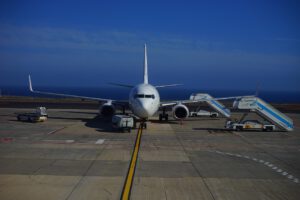By Goutham Belliappa. Originally published at ValueWalk.

As holiday travel approaches and business travel slowly returns, airlines are leveraging predictive capabilities in new ways.
Q3 2021 hedge fund letters, conferences and more
Airlines use predictive capabilities in a variety of ways. Determining how many planes to keep in operation, where to buy fuel, how much fuel to purchase, and how to route planes in an optimal way are a few of the many use cases. During disruptions, airlines also dynamically price their seats based on capacity, and quickly take planes offline or bring them back into the rotation. With predictive technology using data and artificial intelligence (AI), they can forecast what’s going to happen and adjust accordingly.
As we gradually emerge from the pandemic and approach the holidays, business travel has been slow to return, but leisure travel has seen a boost. After the uncertainty from the past 18 months that kept many from taking trips, customers are willing to pay premiums, and the travel industry is pivoting quickly to manage the growing demand.
But there’s a key area where airlines haven’t historically leveraged data and AI: the customer experience. Many of the algorithms haven’t progressed into modern priorities such as solving challenges that travelers face, including customer service that degraded significantly during the pandemic for simple tasks like itinerary changes.
As we approach the holiday season, here are three ways airlines can leverage their predictive technology to improve traveler experiences and earn loyal customers.
Pricing And Flexibility
From a technical perspective, most of the algorithms and technologies leveraged by travel companies are built on open-source platforms on the top cloud providers. Data science is used for dynamic pricing through owned and third-party commerce platforms. Based on matching capacity to forecasted demand, prices are either escalated or reduced. While people are willing to pay higher prices coming out of the pandemic, the customer experience being created for these travelers is even more crucial – to ensure the increased investment results in an enjoyable travel process with a desire to repeat. Using yield management algorithms, airlines are offering flexible pricing options for those travelers who are willing to spend more for fabulous experiences – while still providing economical options for the travelers eager to travel at a lower cost with minimal add-ons or features.
Capacity And Inventory
When addressing capacity and inventory, the travel industry takes a different approach than it does with pricing. What overbooking rate will customers be willing to tolerate? How far in advance will inventory need to be released? With the recent spike in demand, how does the inventory scheduling adjust – in real-time? Airlines also must be mindful of their typical service repair rate. These considerations require applications monitoring equipment, crews, and sentiment performance at the edge – with layers of AI embedded inside each process area. It’s a balancing act of optimizing available capacity for the predicted demand on specific dates, originating from specific locations. Companies who don’t embed data and AI into these processes have lower decision velocities and as a result, decrease their on-time performance, have increased cancellation rates, and reduce their profitability.
Labor And Staffing
The third dimension where airlines can leverage predictive technology to improve customer experiences is labor and staffing. Companies need to ensure they have the right number of staff who serve specific roles to provide the quality level of experience that travelers expect – from those at ticket counters checking travelers in at the airport, to flight attendants on the planes. By using AI to match demand and capacity, airlines can determine the right number of people to hire and staff in each region. This year, new variables like the great resignation, and drastically different levels of leisure and business travel, will make accurately understanding the right number of staff to have for the holiday season more important than ever.
After a year and a half of travel restrictions and increased safety risks, customers returning to the skies are expecting a positive and safe experience – especially since many are paying more for it. Companies in the air travel space that recognize this changing, dynamic market – and figure out smarter ways to navigate it through dynamic pricing, capacity management, and staffing optimization – will create more positive travel experiences, earning customer loyalty and ensuring profitability in the process. Those that fail to recognize the market’s current issues will be left behind on the runway and abandoned by their former travelers.
Article By Goutham Belliappa, VP of Data & AI Engineering, Capgemini Americas
Goutham Belliappa is responsible for driving AI and big-data solutions at Capgemini, with a focus on four major processes: digital customer experience, digital supply chain and logistics, digital manufacturing, and digital worker and employee. He works closely with the business and technology leaders of Fortune 500 organizations to understand their business challenges and partner with them to develop the solutions they need to succeed. Goutham is primarily focused on the manufacturing, automotive, pharmaceuticals, oil and gas, and energy and utilities sectors.
Updated on
Sign up for ValueWalk’s free newsletter here.



